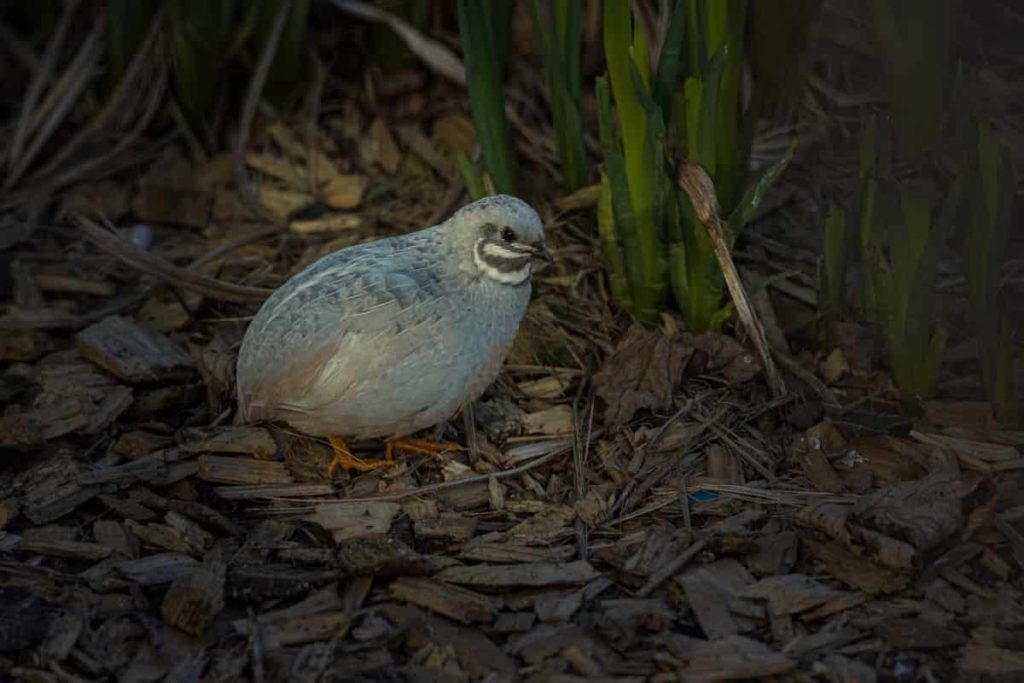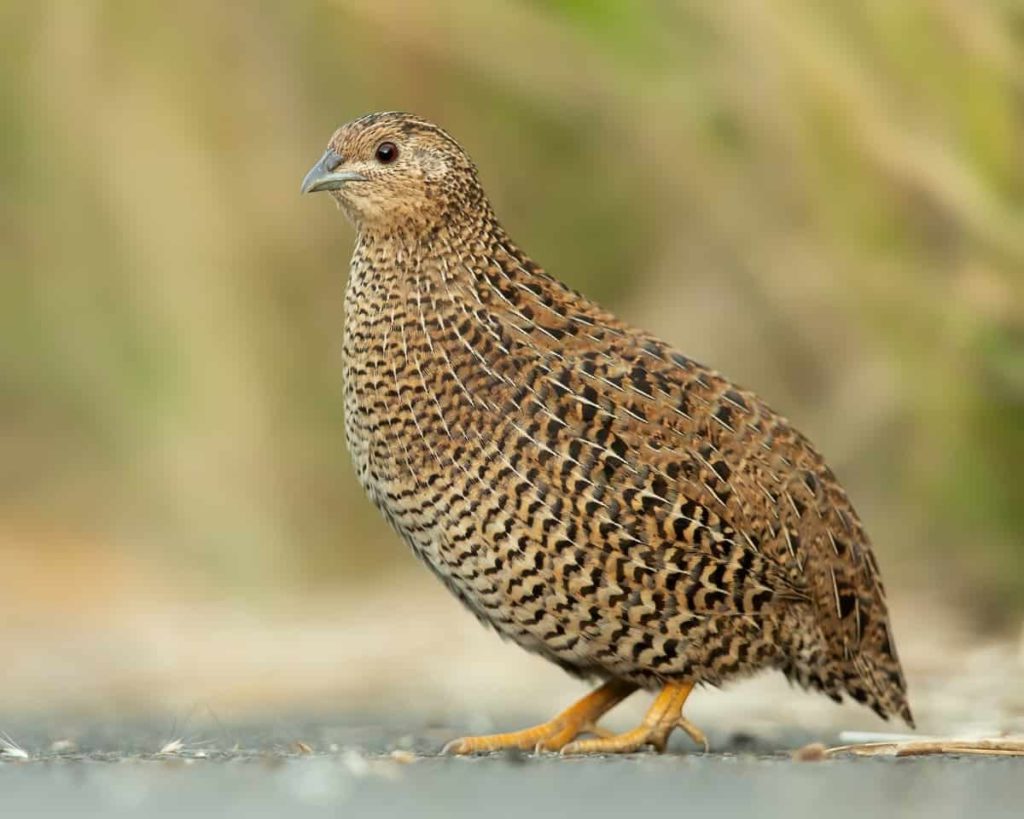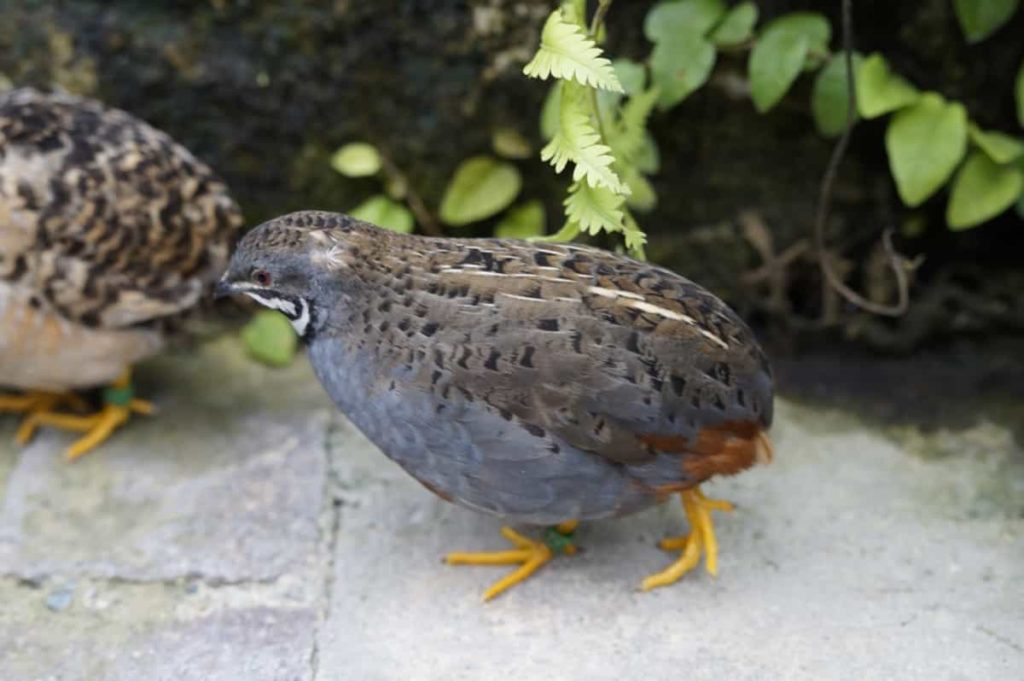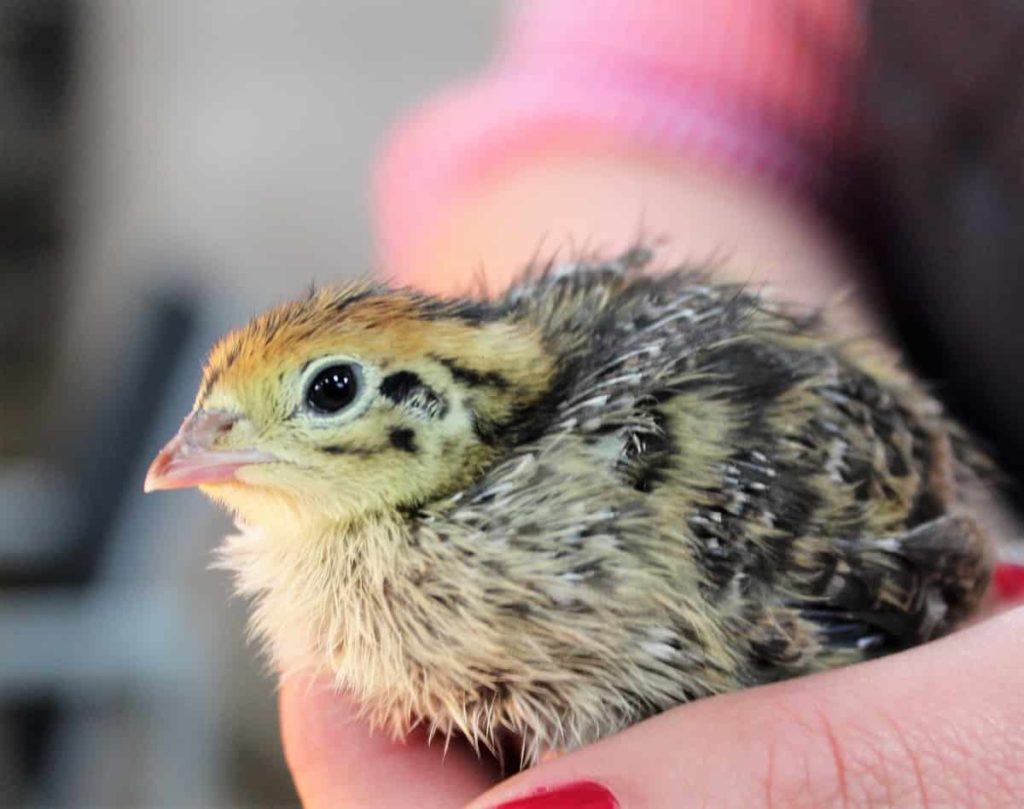Quail farming refers to the practice of commercially growing quails (together with other poultry species) for the aim of producing eggs and meat. Quail farming is a simple, profitable, and enjoyable operation. Because quails are among the smallest types of poultry birds, maintaining a quail farm is simple. Quail farming, like other agricultural operations such as chicken, turkey, or duck farming, is extremely profitable. Let’s check an ideal way of earning 40000 per month from Quail farm.

Almost every sort of weather is acceptable for establishing a quail farming operation. Quail meat and eggs are both delicious and healthful. Compared to other poultry eggs, quail eggs are extremely healthy. Quail eggs are higher in protein, phosphorus, iron, vitamin A, B1, and B2 than chicken eggs. Quail farming has the potential to help fulfill the growing need for food and nutrition. Quail farming is a low-cost venture that requires little investment and manpower. Quails can be kept with other poultry species to provide meat or eggs.
What are the advantages of Quail farming?
Quail farming requires the smallest initial expenditure than any other bird. Quails are little birds that don’t take up much space on the floor. Quails are tough when compared to other poultry. Quails mature faster than any other bird, and they begin to lay eggs at six to seven weeks of age. The egg-laying rate is quite high, reaching up to 280 eggs per year.
Quail meat is flavorful and leaner than chicken meat. Quail meat is beneficial to children’s physical and mental development. Despite their small size, quail eggs have almost the same nutritional value as chicken eggs. Quails can easily be raised with other birds and animals. Commercial quail farming can be a profitable venture.
In case you miss this: Backyard Quail Farming – Quail Raising Practices

Earning 40000 per month from Quail farm
The success story of Mr. Peddi Jakkanna
Mr. Peddi Jakkanna of Medchel district, Telangana, has worked as a chemical engineer in a private laboratory company. While he was working, he slowly learned about quail farming and started a mini-farm of quails over his rooftop with 2 small sheds, while he was working for laboratories. Even though at the start he faced some issues in rearing the quails, he learned his mistakes from the experience and started again.
And now as he observed the profits are high, he quit his job and started a large quail farm and is working it on full time. Mr. Peddi says that quail meat is more nutritious than the country chicken and is also best in taste. Let us get into full details of his quail farm.
Shed construction details of Mr. Peddi’s Quail farm
There is no need to construct large, heavy investment sheds for rearing quails. The requirements of the quails shed can be constructed with minimal cost. Mr. Peddi constructed his shed in 600 square feet area. Also most often, the farmers from the village use raw materials to construct sheds in the form of huts and rear these animals. You don’t need a large area for rearing quails, you can even grow them over your rooftop if you have enough space.
In case you miss this: Quail Hatching – Housing, Management Guide

Rearing of Quails according to Mr. Peddi
You can rear quails in two procedures, one is the caging system and the other is the grounding system. Mr. Peddi says that caging system is expensive but is more efficient than the grounding system because in caging system water nippers are used for feeding quails. After learning this Mr. Peddi developed a new technique to rear quails. He used nippers in the grounding system instead of drinkers and says that it is working well and this method takes minimal cost and gives high efficiency.
He said this method also helped him in maintaining the sheds clean as there is minimal water wastage. First Mr. Peddi purchased 2000 one-day-old quails at 7 rupees per bird and bought 10 feeders for 2000 birds. These birds are reared daily for 40 days taking male to female ratio of 1:3, which means while rearing them we have to make sure that there is at least one male bird for three female birds. This ratio can help female birds to produce quality eggs that can give birth to healthy quails, says Mr. Peddi.
This ratio can also help you increase the hatching percentage of eggs. Female birds have small dark spots on its neck while the males don’t. This can help you recognize male and female birds. After raising them for 40 days, when the quails attain maturity, they are ready to lay eggs. 2000 quails can produce nearly 1000 to 1200 eggs while laying period. These eggs are collected daily in the evening from 3 pm to 7 pm.
In case you miss this: Quail Farming Business Plan – A Beginners Guide

Quails lay eggs only in the evening and these should be collected from hour to hour. If you leave these eggs without collecting or if you choose to collect eggs altogether at once in the night, then the eggs can get damaged by other quails. Hence this method should be avoided since this can decrease our hatching rate, says Mr. Peddi.
These eggs are then prepared for the brooding process. For brooding, Mr. Peddi uses a hatchery machine of 1,20,000 eggs capacity. The eggs are loaded into a hatchery machine and are kept in them for 4 to 7 days at an adequate temperature. In summers you should unload the eggs quickly after 4 days, cause high temperatures can result in the death of baby quails. And in winters you have to maintain the eggs for 5 to 7 days in the hatchery machine since the temperature is cold outside and the eggs take more time to hatch.
The hatchery machine should be able to provide proper temperature and humidity for eggs. An average egg requires a minimum of 30 to 37 degrees Celsius to hatch properly. The machine turns the eggs once in a while which prevents the developing yolk inside from sticking to the shell. You have to have proper knowledge about egg hatching temperatures and the care required for it. As hatcheries are less in number, Mr. Peddi recommends the farmers buy their hatchery equipment.
This might increase your one-time cost a bit but can provide you with great results. You should maintain a proper record of the dates on which the eggs are loaded and unloaded, along with checking the hatchery temperature and humidity settings once in a while. A little bit of error while doing this may lead you towards bitter experiences.
In case you miss this: Quail Farming Project Report, Cost and Profit Analysis

After the babies hatch from eggs you should put them in the brooding room. A brooding room is a space for newly born quails, which is completely protected from sunlight and breezes. You have to maintain a proper temperature in the brooding room, this allows the babies to grow properly after 7 to 8 days. In his quail farm, Mr. Peddi uses 3 types of brooding systems. For the babies that are of less weight, they use light brooding.
In this system, the babies are put in a small closed space along with 100 watts of light, which can help them to develop faster and to reach the other quails in terms of health. Another brooding system they use is the pot system. In this method, not-too-hot burning coal is put in a pot that has holes around it at the bottom. By this, a warm environment is created around the pot, which is used to support the growth of the quails. You can observe quails gathering around the pot and lying there for some time.
Another method known as gas brooding was introduced on Mr. Peddi’s farm. According to this, a dome-shaped metal is placed on a stand that releases constant gas. This is connected to a gas cylinder. When quails feel the temperature in the brooding room uncomfortable then they come and lie under this metal which provides sufficient warmth. This can develop their growth rate. Mr. Peddi says that by using such advanced methods, he can increase the mortality rate and is resulting in the production of healthy quails.
You have to maintain rechargeable lights in the brooding room, so that when there is a power cut you can avoid baby quails from stressing themselves which can cause their death. You should also provide feeders and drinkers in the brooding room so that the baby quails will feed on them when required.
In case you miss this: Poultry Farm Insurance in India, Companies, Policy, and Premium

Marketing and profit analysis of Mr. Peddi’s Quail farm
Mr. Peddi spent 7 rupees per day-old bird while he was buying quails. And it takes 14 rupees per bird per day to provide them with feed. If any additional costs such as labor, electricity and other miscellaneous costs it doesn’t take any more than 2 rupees per bird per day, altogether combined. In market centers, two birds can be sold at rupees 90 and in a live weight system, two birds can be sold at nearly 120 rupees.
Mr. Peddi sells approximately 2000 quails per month and he gets a profit of 20 to 23 rupees per bird which means he is earning approximately 40,000 per month. Now Mr. Peddi is a successful quail farmer and suggests that young farmers enter this business industry. Maybe at starting you can experience low profits but you can expand your quail farm quite faster and once the farm gets expanded you can expect high profits, he added.
- Economical Aquaculture: A Guide to Low-Budget Fish Farming
- 15 Common Planting Errors That Can Doom Your Fruit Trees
- How to Make Houseplants Bushy: Effective Tips and Ideas
- Innovative Strategies for Boosting Coconut Pollination and Yield
- Pollination Strategies for Maximum Pumpkin Yield
- The Complete Guide to Chicken Fattening: Strategies for Maximum Growth
- Natural Solutions for Tulip Problems: 100% Effective Remedies for Leaf and Bulb-Related Issues
- Revolutionizing Citrus Preservation: Towards a Healthier, Greener Future
- Natural Solutions for Peony Leaf and Flower Problems: 100% Effective Remedies
- Maximizing Profits with Avocado Contract Farming in India: A Comprehensive Guide
- Natural Solutions for Hydrangea Problems: 100% Effective Remedies for Leaf and Flowers
- The Ultimate Guide to Choosing the Perfect Foliage Friend: Bringing Life Indoors
- From Sunlight to Sustainability: 15 Ways to Use Solar Technology in Agriculture
- The Ultimate Guide to Dong Tao Chicken: Exploring from History to Raising
- The Eco-Friendly Makeover: How to Convert Your Unused Swimming Pool into a Fish Pond
- Mastering the Art of Delaware Chicken Farming: Essentials for Healthy Backyard Flocks
- 20 Best Homemade Fertilizers for Money Plant: DIY Recipes and Application Methods
- How to Craft a Comprehensive Free-Range Chicken Farming Business Plan
- Brighten Your Flock: Raising Easter Egger Chickens for Beauty and Bounty
- How to Optimize Your Poultry Egg Farm Business Plan with These Strategies
- Subsidy for Spirulina Cultivation: How Indian Government Schemes Encouraging Spirulina Farmers
- Ultimate Guide to Raising Dominique Chickens: Breeding, Feeding, Egg-Production, and Care
- Mastering the Art of Raising Jersey Giant Chickens: Care, Feeding, and More
- Ultimate Guide to Raising Legbar Chickens: Breeding, Farming Practices, Diet, Egg-Production
- How to Raise Welsummer Chickens: A Comprehensive Guide for Beginners
- How to Protect Indoor Plants in Winter: A Comprehensive Guide
- Ultimate Guide to Grow Bag Gardening: Tips, Tricks, and Planting Ideas for Urban Gardeners
- Guide to Lotus Cultivation: How to Propagate, Plant, Grow, Care, Cost, and Profit
- Agriculture Drone Subsidy Scheme: Government Kisan Subsidy, License, and How to Apply Online
- Ultimate Guide to Raising Araucana Chickens: Breed Profile, Farming Economics, Diet, and Care
- Bringing Hydroponics to Classroom: Importance, Benefits of Learning for School Students
- Ultimate Guide to Raising Polish Chickens: Breed Profile, Farming Economics, Diet, and Care
- Ultimate Guide to Raising Australorp Chickens: Profile, Farming Economics, Egg Production, Diet, and Care
- Silkie Chicken Farming: Raising Practices, Varieties, Egg Production, Diet, and Care
- Sussex Chicken Farming: Raising Practices, Varieties, Egg Production, Diet and Care
- Homemade Feed Formulations for Livestock: Discover Cost-effective Starter to Finisher Feed Recipes